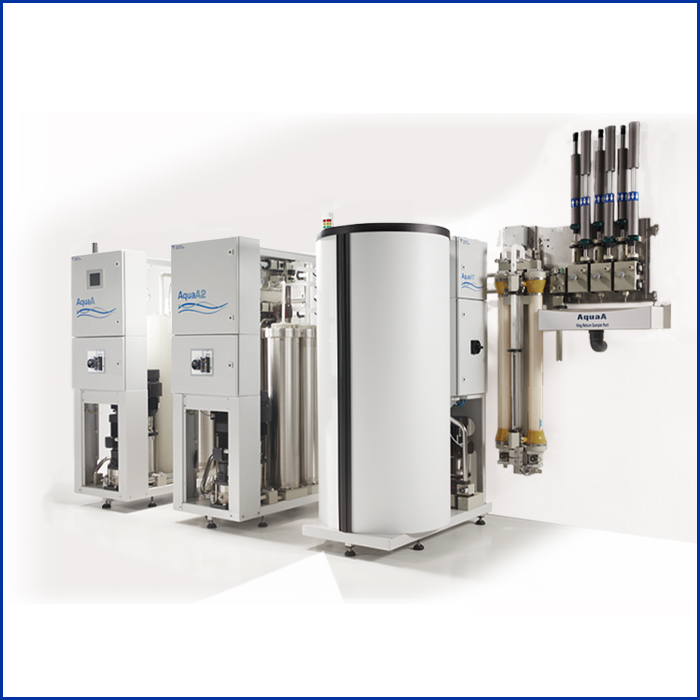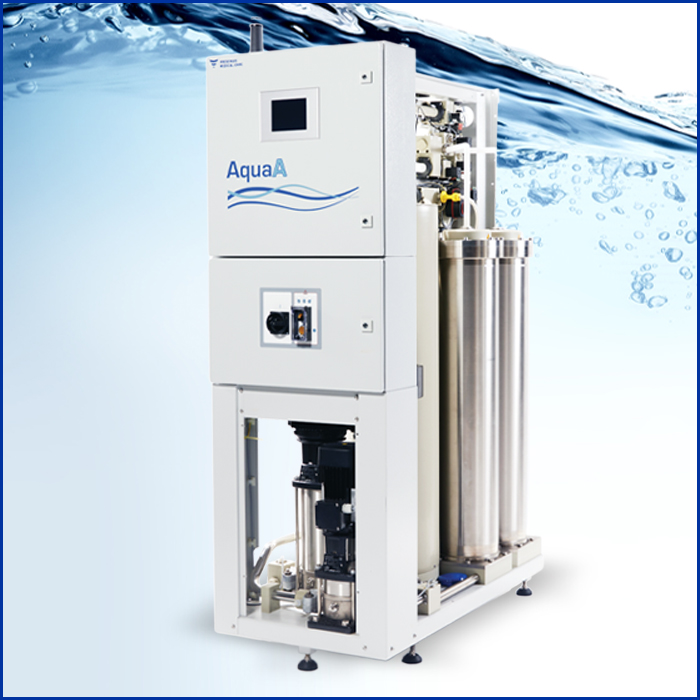Chronic Cardiovascular Disease Management in the Dialysis Population
As the population of patients on dialysis continues to grow, the shortcomings of three, relatively brief in-center treatments per week are clear. Many patients experience chronic volume and pressure overload, which must be addressed with aggressive ultrafiltration and the use of multiple antihypertensive medications. More frequent hemodialysis, which is most readily delivered in the home setting, can be used to better manage volume status. More frequent home hemodialysis (HHD) reduces interdialytic volume load, pre-dialysis blood pressure, and the need for antihypertensive medication, and ultimately can improve cardiac structure.
The prevalent dialysis population rose to 511,000 patients at the end of 2016. With a forecasted annual growth rate of 2.5 percent, which is historically low, the size of the population in 2030 would nevertheless exceed 700,000. This projection is consistent with data reported in 2019 using different techniques.1
This growing population will stress the existing infrastructure with shortages in the numbers of nephrologists, nurses, dietitians, and social workers (Figure 1). In addition, the costs of care related to staffing and supplies will likely rise with inflation, making in-center care more expensive while revenue from payers may lag behind.
FIGURE 1 | Prevalent dialysis population, actual (1996-2017) and projected* (2018-2030)
*USRDS 2018 ADR Reference table D.6 with simple autoregression projection
On top of these growth projections, recent data on trends in mortality and hospitalization rates show little improvement, suggesting that alternative approaches may be needed to advance value based care (Figure 2).
FIGURE 2 | Mortality and hospitalization rates 2014 to 2017
To continue to extend survival on dialysis, lower risks of hospitalization and emergent care, and improve the quality of life in dialysis patients, care delivery systems should aim for more stable dialysis treatments in lower-cost settings. Dialytic therapy, in particular, must address the primary sources of morbidity: cardiovascular death and infection. The reality is that three-times-per-week hemodialysis (HD) may not be effective for many patients in addressing chronic volume and sodium overload and underlying cardiovascular disease, including persistent hypertension (HTN), advancing left ventricular hypertrophy (LVH), heart failure (HF), and arrhythmia. While considerable attention has been given to the physiology of three-times-per-week HD with high ultrafiltration rates (UFRs), this therapy covers only 7 percent of the hours in a week. Little attention has been given to the remaining 93 percent, when volume and sodium loading of the cardiovascular system occurs.
Figure 3 illustrates the major differences in care for HTN, LVH, and HF in nondialysis and dialysis populations.
FIGURE 3 | Management of chronic hypertension, left ventricular hypertrophy, and heart failure
The cornerstone of treatment for cardiovascular disease is control of salt and water throughout the day, seven days a week. Diuretic use is tailored to achieve diuresis throughout the day, but HD addresses fluid removal only three days a week and for just 3.5 to 4 hours on each of those days. The use of cardiac drugs to treat HF and HTN and to control volume-related LVH is limited; these drugs become ineffective when the vasculature is volume loaded, and the occurrence of intradialytic hypotension further complicates their use. Because no volume removal occurs in the time off HD, patient vasculature is cyclically loaded. This causes high pressures in the heart, increased stress on the myocardial walls, and dilation of the heart chambers and fibrous structure of the heart and valves, which can lead to progressive LVH, HF, arrhythmia, and associated hospitalization and mortality.
Pressure profiles of the heart are shown in Figure 4. Normal pulmonary artery and right ventricular pressures are 20/10 mmHg systolic and diastolic. Between HD treatments, however, when volume loading occurs, pressures approach 40 mmHg systolic—pulmonary hypertension, essentially—demonstrating the direct impact on the heart of volume loading.2
FIGURE 4 | Average rest values from first, second, and third nights (n = 16)
For a more complete look at the pathophysiologic causal pathway driving cardiovascular disease on three-times-per-week HD, the volume loading that occurs off dialysis needs to be viewed over the entire week of therapy (Figure 5).
FIGURE 5 | Challenges with thrice-weekly hemodialysis
The top of the chart shows how volume loading with water and salt contributes to the evolution of chronic cardiac disease; the lower part synthesizes the intra-treatment consequences of volume removal, with higher UFRs leading to the now well- recognized phenomenon of cardiac stunning.
Volume loading off HD cannot be addressed by simply increasing the three-times-per-week treatment time. This was tested most recently in A Clinical Trial of Intensive (ACTIVE) Dialysis study, which compared thrice-weekly treatments totaling 12 to 15 hours to those totaling 24+ hours, looking at QOL and at secondary markers including biochemical data, BP, and left ventricular mass index (LVMI).3 There was no difference in primary QOL measures, and while the secondary outcomes showed fewer BP medications and phosphate binders, there was no statistical difference in BP control or LVMI. This study suggests that extending three-times-per-week treatment times may have limited effect given the off-dialysis volume loading that continues to drive up cardiac pressures.
The fundamental realities of cardiovascular pathophysiology and the inherent intermittency of in-center hemodialysis, even when session duration is extended, together provide the rationale for more frequent hemodialysis in the home setting.
The populations most vulnerable to these volume loading states are shown in Figure 6.
FIGURE 6 | Medical indications that are likely to clinically benefit from more frequent hemodialysis
Patients with known HF and persistent fluid overload are potential candidates for more frequent HD therapy, as are those with persistent and resistant HTN, and those with evidence of abnormal LVH and persistent uncontrolled hyperphosphatemia. Additional populations that deserve consideration due to clinical challenges in care delivery are noted in Figure 7. While a patient may clinically benefit from more frequent dialysis, the decision to prescribe more frequent dialysis is a physician judgment based on medical necessity.
FIGURE 7 | Specific patient phenotypes that are targets for more frequent HD
Leading this list are patients transitioning from peritoneal dialysis (PD) to HD, a group with very high rates of death and hospitalization around the time of transition. A recent study compared PD patients transitioning to home hemodialysis (HHD) with those moving to in-center HD.4 The overall assessment of these groups is shown in Figure 8.5
FIGURE 8 | Reported outcomes in patients who transitioned from PD to HD
In this study, patients who moved from PD to HHD were hospitalized only 9.1 days during the three months before and three months after the transition, compared to more than double this rate among patients who moved from PD to in-center HD.
Survival among HHD patients was significantly better, and their likelihood of a kidney transplant was 29 percent higher. This study provides insight into the possible advantages of a careful transition from peritoneal dialysis to HHD, with more frequent treatment and improved management of volume control and heart failure.
THE SOLUTION
Delivering hemodialysis five to six days per week has been shown in clinical trials to control volume, reduce blood pressure and the use of blood pressure medication, lower LVMI, reduce serum phosphorus and the use of phosphate binders, improve patient-related QOL measures, and shorten post-dialysis recovery time. The challenge in delivering more frequent therapy in the in-center environment, with fixed-run schedules and a lack of extra stations, is clear. The home setting in the best alternative; time is more flexible, and schedules can be better matched to patient and family lifestyles.
Published observational data have confirmed findings from clinical trials, demonstrating the efficacy of more frequent HD by daily treatments or on nocturnal schedules. More frequent HD addresses high UFRs and reduces volume loading of the heart by controlling interdialytic volume excess. Blood pressure control is achieved with fewer medications, and phosphate control is improved, also with fewer medications. More frequent HHD not only delivers the required stability of therapy in a lower-cost setting, but also improves the tolerability of the therapy and allows better control of cardiovascular disease.
Meet Our Experts
ALLAN COLLINS, MD, FACP
Senior Chief Scientist, Fresenius Medical Care
Allan Collins has a distinguished career with more than 30 years of work in nephrology and ESRD treatment. He is the former chief medical officer for NxStage Medical, Inc. and served as director of the National Institute of Health's/NIDDK's United States Renal Data System from 1999 to 2014. Dr. Collins has published more than 225 articles, 600 abstracts, and 20 book chapters, and has given more than 365 invited presentations. His clinical experience and research have focused on acute and chronic care of ESRD and chronic kidney disease patients, and prospective and retrospective clinical studies on dialysis techniques and associated outcomes. The former president of the National Kidney Foundation, Dr. Collins served on the NKF scientific advisory board for six years, with the Kidney Dialysis Outcomes Quality Initiative, and on the International Society of Nephrology's Commission for the Global Advancement of Nephrology Committee. He graduated with his medical degree from Wayne State University in Detroit.
ERIC WEINHANDL, PhD, MS
Senior Director, Epidemiology and Biostatistics, Fresenius Medical Care
Eric Weinhandl has over 15 years of experience in dialysis-related research, including extensive experience with Medicare claims. Prior to joining Fresenius Medical Care, Eric was a clinical epidemiologist at NxStage Medical, where he led a team devoted to clinical research on the benefits and risks of frequent hemodialysis in the home setting. Earlier in his career, he worked at the Chronic Disease Research Group in Minneapolis, Minnesota, where he contributed to the United States Renal Data System, the Peer Kidney Care Initiative, and numerous industry-sponsored research projects on the comparative effectiveness of dialytic modalities and the pharmacoepidemiology of chronic kidney disease. Eric holds a master of science in biostatistics and a PhD in epidemiology from the University of Minnesota, where he continues to serve as an adjunct professor in the College of Pharmacy. Eric has authored approximately 70 manuscripts and presented roughly 140 abstracts at scientific meetings.
References
- McCullough KP, Morgenstern H, Saran R, Herman WH, Robinson BM. Projecting ESRD incidence and prevalence in the United States through 2030. J Am Soc Nephrol 2019 Jan;30(1):127-135. doi: 10.1681/ASN.2018050531.
- Kjellström B, Braunschweig F, Löfberg E, et al. Changes in right ventricular pressures between hemodialysis sessions recorded by an implantable hemodynamic monitor. Am J Cardiol 2009 Jan 1;103(1):119-23.
- Jardine MJ, Zuo L, Gray NA, et al. A trial of extending hemodialysis hours and quality of life. J Am Soc Nephrol 2017 Jun;28(6):1898-1911. doi: 10.1681/ASN.2015111225.
- Kansal SK, Morfin JA, Weinhandl ED. Survival and kidney transplant incidence on home versus in-center hemodialysis, following peritoneal dialysis technique failure. Perit Dial Int 2019 Jan-Feb;39(1):25-34. doi: 10.3747/pdi.2017.00207.
- Ibid.


